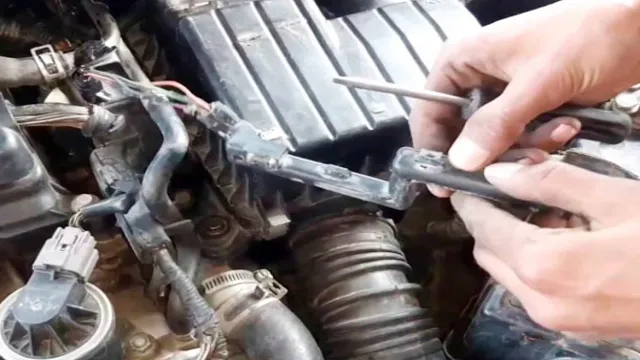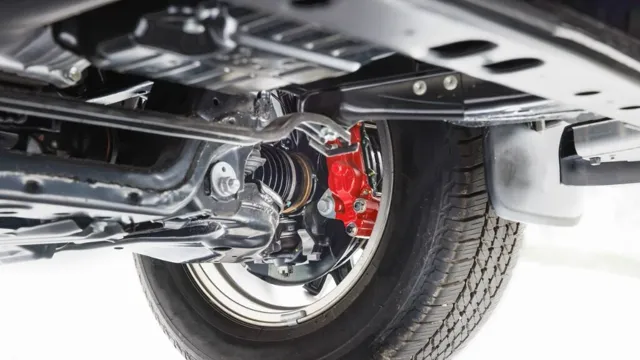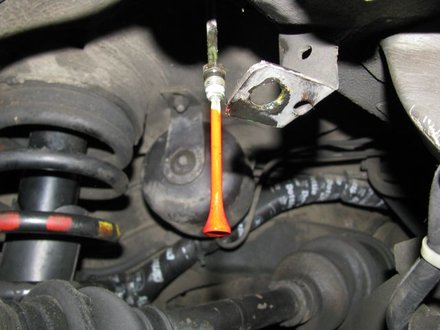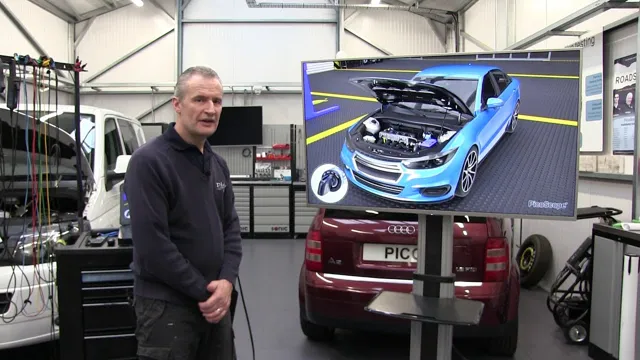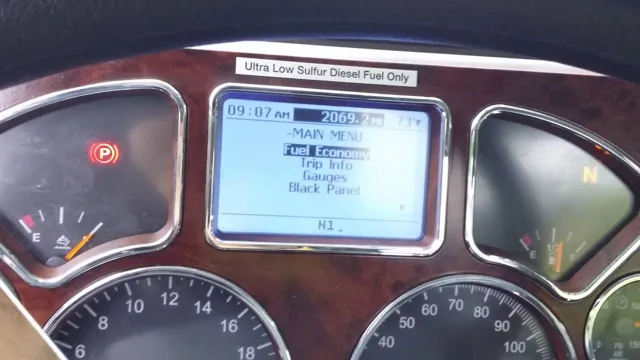Foolproof Ways to Fix P1000 Code: A Comprehensive Guide for Car Enthusiasts
Are you struggling to understand why the dreaded P1000 code keeps showing up on your car’s dashboard? Don’t worry, you’re not alone. The P1000 code can be frustrating for many car owners, as it doesn’t give a clear-cut indication of what’s wrong with their vehicle. While this code doesn’t necessarily mean that there’s a serious issue with your car, it’s always best to get it fixed promptly to avoid any potential problems down the road.
In this blog post, we’ll explore what the P1000 code means, why it keeps popping up on your dash, and most importantly, how to fix it. So, buckle up and let’s get started!
What is P1000 Code?
If you’re experiencing the P1000 code on your vehicle, it’s important to understand what it means and how to address it. The P1000 code is not specific to one vehicle make or model, but rather a generic code that indicates the engine control module (ECM) has not completed its diagnostic tests. This can occur when the battery has been disconnected or replaced, or when there has been a software update or reset of the ECM.
To fix the P1000 code, the vehicle’s ECM must complete a full diagnostic cycle. This means driving the vehicle under varied conditions for a certain amount of time until the ECM is able to complete all of its checks. If this does not resolve the issue, it’s recommended to take the vehicle to a trusted mechanic who can diagnose and address any underlying problems that may be causing the code to appear.
By addressing the P1000 code promptly, you can ensure that your vehicle is running optimally and without any underlying issues.
Explanation of the Code
The P1000 code is a generic diagnostic trouble code that signifies a manufacturer-specific powertrain problem. It is a special code that tells you that certain aspects of the vehicle systems have not completed their self-check routines. It is often referred to as readiness monitors, which help determine whether the emissions control system is functioning correctly.
When the car engine is started, the powertrain control module (PCM) regularly tests various systems to ensure they are working appropriately. This test usually takes time to fill the readiness monitor, and if any of the parts fail to complete their readiness check routine, the P1000 code will appear. This error code occurs due to incomplete self-tests, such as battery disconnects, dead battery conditions, PCM replacements or other engine-related repairs.
If the code persists, it is advisable to take your car to a certified mechanic to check for any underlying issues.
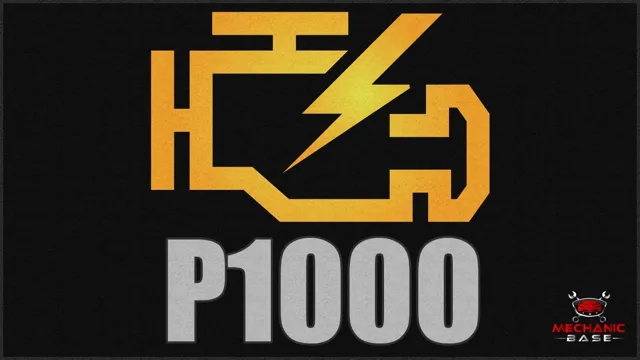
How to Diagnose P1000 Code
If you’re experiencing the P1000 code in your vehicle, it can be puzzling and frustrating to determine the root cause. The P1000 code is often a sign of a monitoring system that has not yet finished running its diagnostic checks. To diagnose the P1000 code, you’ll need to use a OBD-II diagnostic scanner to check your vehicle’s computer for any error codes.
Once you locate any other codes, you can resolve them first, which may also help clear the P1000 code. If you don’t find any other codes, you may need to reset your vehicle’s computer by disconnecting the battery for 15 minutes. After reconnecting the battery, start your vehicle and run it for 10-15 minutes to allow the computer to relearn the vehicle’s operating conditions.
If the P1000 code persists, you may need to take your vehicle to a mechanic for further diagnosis. Remember, it’s important not to ignore the P1000 code as it can lead to other issues down the line.
Using a Code Reader
If you’re experiencing trouble with your vehicle and it’s showing the P1000 code, the best way to diagnose the issue is by using a code reader. A code reader will help to determine what’s causing your vehicle to malfunction. Firstly, make sure to check the manual and the internet to understand what this code means and what could be causing it.
Then, plug the code reader into the OBD-II port of your vehicle, which should be located beneath the dashboard on either the driver or passenger side. Follow the instructions and let the code reader scan for any codes and analyze the data. Once it has done so, the code reader will display an error code, helping you decipher what the issue might be.
Remember, this code is generic, so it may require further investigation to pinpoint the correct cause of the problem. To fix the issue, you may need to bring your vehicle to a professional mechanic. Overall, using a code reader is an excellent way to save time and money in the diagnosing process.
Identifying the Cause
When it comes to diagnosing a P1000 code, the first step is to identify the root cause of the issue. This code is often triggered when the vehicle’s onboard diagnostic system (OBD-II) has not completed a full diagnostic cycle or has not been able to run some of the required checks. Therefore, it is crucial to analyze the system’s readiness monitors to identify any circuits or sensors that may be failing the diagnose routine.
One way to diagnose the problem is to use a scan tool to retrieve diagnostic trouble codes (DTCs) and freeze frame data. This data can provide valuable insights into the specific components or systems that are malfunctioning and need further investigation. Checking the battery status, engine sensors, and wiring connections can also reveal any underlying issues.
By conducting a thorough diagnosis and taking the necessary corrective actions, it ensures the vehicle runs efficiently and safely.
Fixing P1000 Code
If you’re seeing the P1000 code on your vehicle’s diagnostic system, don’t panic. This code isn’t actually an error, but rather a status code indicating that the system is still in its “uncertain” phase after a reset. In other words, your vehicle simply needs to complete a series of self-tests before the diagnostic system is fully operational again.
The easiest way to clear this code is to drive your vehicle for a short period of time, allowing the system to complete its self-tests. If the code persists even after driving your vehicle for a while, consult your vehicle’s manual or take it to a mechanic to ensure there isn’t a deeper issue at play. Ultimately, the P1000 code is nothing to worry about and can be quickly and easily resolved with a little patience.
Replacing the Faulty Sensor
If you are unable to clear the P1000 code even after following the standard procedure for clearing it, the problem might lie with a faulty sensor. In such cases, you will need to replace the sensor to fix the issue. A faulty sensor can cause a wide range of problems in your vehicle, and fixing it is crucial for ensuring its optimal performance.
You can easily locate the faulty sensor by using a diagnostic tool, and once you identify it, simply replace it with a new one. Replacing a faulty sensor is a straightforward process that can be completed within a few hours, and it doesn’t require any special technical knowledge or expertise. So, if you are experiencing problems with your vehicle due to a faulty sensor, don’t hesitate to replace it and fix the P1000 code for good.
Cleaning the Throttle Body
If you’re experiencing the P1000 code in your car, chances are it’s time to clean the throttle body. The throttle body is an essential component of your car’s fuel system that controls the amount of air entering the engine. Over time, dirt and debris can accumulate in the throttle body, causing it to malfunction and trigger the P1000 code.
Cleaning the throttle body is a straightforward process that can be done with some basic tools and a bit of elbow grease. Begin by removing the air intake pipe and detaching the electrical connections from the throttle body. Then, use a throttle body cleaner and a soft-bristled brush to remove any buildup inside the throttle body.
Once you’ve cleaned the throttle body, reattach the air intake pipe and electrical connections, and start the engine to make sure everything is working correctly. With a little bit of maintenance, you can prevent the P1000 code from appearing in the future and keep your car running smoothly.
Checking the Fuel System
If you’re facing the P1000 code in your vehicle, there are many possible causes, but one of the most common is a malfunction in the fuel system. Checking your fuel pump, fuel filter, and fuel injectors could identify the problem, allowing you to fix it and clear the code. Start by checking your fuel pump and listen for any odd noises or rattling when the engine is running.
If you hear anything out of the ordinary, the fuel pump might be failing and will require replacement. Next, check the fuel filter and inspect it for any damage or clogs that might restrict fuel flow. If it’s clogged, replace it immediately to ensure your engine is running properly.
Finally, your fuel injectors could be causing the P1000 code, so inspect them for any damage or blockages that could prevent proper fuel delivery. By checking and troubleshooting your fuel system, you can identify and fix the P1000 code, ensuring a smooth and efficient ride.
Preventing P1000 Code
If you’ve ever seen the P1000 code pop up on your dashboard, don’t panic. This code is simply an indicator that your vehicle’s computer system needs more time to run its diagnostic tests. Thankfully, there are a few things you can do to prevent this code from appearing in the first place.
One of the simplest steps you can take is to make sure your car’s battery is fully charged and in good working order. A weak battery can cause all sorts of issues with your vehicle’s electrical systems, and can even prevent the diagnostic tests from running properly. In addition, regular maintenance, such as oil changes and air filter replacements, can help keep your car running smoothly and reduce the chances of any issues arising that could trigger the P1000 code.
By being proactive about your vehicle’s health, you can help prevent the dreaded P1000 code from ever making an appearance.
Routine Maintenance
Routine maintenance is important in preventing P1000 code in your vehicle. This code is emitted by the onboard diagnostics system when it detects that the vehicle’s readiness monitors have not been completed. These readiness monitors are a series of self-tests that the vehicle’s computer runs to ensure that all of the emission control systems are functioning properly.
Regular maintenance, such as oil changes, air filter replacements, and spark plug replacements, can help your vehicle pass these tests and prevent the P1000 code from appearing. Additionally, ensuring that your gas cap is properly secured can prevent evaporation-related issues that may trigger the P1000 code. By staying on top of routine maintenance, you can help ensure that your vehicle runs smoothly and efficiently, while also avoiding costly repairs down the line.
So, don’t neglect your routine maintenance schedule – it could save you time and money in the long run.
Regular Checkups
Regular checkups are crucial for preventing P1000 code. This code generally occurs in vehicles that haven’t been driven regularly, and it’s a sign that the onboard diagnostic system hasn’t completed all of its self-checks. The code isn’t necessarily indicative of a significant issue, but it can prevent other faults from being identified if it’s not resolved.
That’s why it’s essential to have regular checkups and keep your vehicle’s systems in good shape. By doing so, you’ll ensure that the diagnostic system runs its checks correctly and that any potential issues can be resolved promptly. In summary, regular checkups are an excellent way to prevent P1000 code from occurring and keep your vehicle running smoothly.
Conclusion
In conclusion, fixing the infamous P1000 code requires a combination of technical knowledge, patience, and a sense of humor (because let’s face it, car troubles can be stressful). First, ensure all systems are functioning properly and any underlying issues are addressed. Then, reset the code and perform a thorough drive cycle to allow the car’s computer to properly relearn.
And if all else fails, remember that sometimes the best solution is to just take a break and enjoy a nice cup of coffee while your car works out its issues.”
FAQs
What does P1000 code mean?
P1000 code refers to the readiness of on-board diagnostics monitors. It means that the vehicle’s computer has not completed its self-test and is not ready for emissions testing.
How do I diagnose a P1000 code?
You can diagnose a P1000 code by using an OBD-II scanner to check the readiness of the computer’s self-test monitors. If the computer is not ready, then the P1000 code will appear. You should also check for any other accompanying codes that may provide further information about the problem.
How do I fix a P1000 code?
There is no one-size-fits-all fix for a P1000 code, as the code simply indicates that the computer is not ready for testing. Some strategies that may help include driving the vehicle for a certain amount of time, following a specific driving cycle, or performing a reset procedure on the computer. It is important to consult a mechanic or check the vehicle’s manual for specific directions.
Can I pass emissions with a P1000 code?
No, you cannot pass emissions with a P1000 code present. The P1000 code indicates that the vehicle’s computer has not completed its self-test and is not ready for emissions testing. You must wait until the computer finishes its self-test and the P1000 code disappears before attempting an emissions test.

